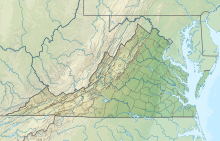| Joint Expedition Against Franklin | |||||||
|---|---|---|---|---|---|---|---|
| Part of the American Civil War | |||||||
 Extract from 1892 map of the subject area. The Blackwater River flows north-south in left of the image. | |||||||
| |||||||
| Belligerents | |||||||
|
Union Navy Union Army | Confederate States Army | ||||||
| Commanders and leaders | |||||||
|
C. W. Flusser Edmund R. Colhoun Charles A. French Samuel P. Spear |
Dennis Dozier Ferebee J. K. Marshall Edward Graham Collet Leventhorpe | ||||||
| Strength | |||||||
|
3 Gunboats 1,300 Infantry w/1 × Artillery section | 10,000–12,000 Infantry | ||||||
| Casualties and losses | |||||||
| 5 KIA, 21 wounded | estimated 70–100 | ||||||
Location within Virginia | |||||||
The Joint Expedition Against Franklin was a joint engagement between the United States Army and Navy against the Confederate States Army during the American Civil War. The engagement was intended to move Union forces into an area where Confederate forces were gathering as they prepared to move on Suffolk, Virginia. Originally planned as a coordinated two-pronged attack with a naval flotilla supporting an infantry advance on Franklin, Virginia, communications delays caused the Union Navy to start the mission before the Army was ready to support it. Instead, October 3, 1862 found Union Naval forces on the Blackwater River greatly outnumbered by Confederate infantrymen and ultimately forced to retreat. The naval action alone is also known as the Action at Crumpler's Bluff or the Battle of Crumpler's Bluff.[1][2]
Simultaneously, a nearby Army reconnaissance team conducted a failed assault on the town on the basis that the audibly nearby Naval forces—which they did not know were then in retreat—would bring support. The outcome left the Union forces with a combined 5 casualties and 21 wounded. Dialogue between officers following the conflict left the Union navy questioning the usefulness of gunboats in joint expedition settings in which they would not be capable of supporting themselves.
- ^ "War Comes to the Blackwater (1862-1878)". Franklin, Virginia, US: Downtown Franklin Association, Inc. 2009-04-21. Archived from the original on 2011-07-26. Retrieved 2009-09-25.
- ^ Cite error: The named reference
Southamptonwas invoked but never defined (see the help page).

